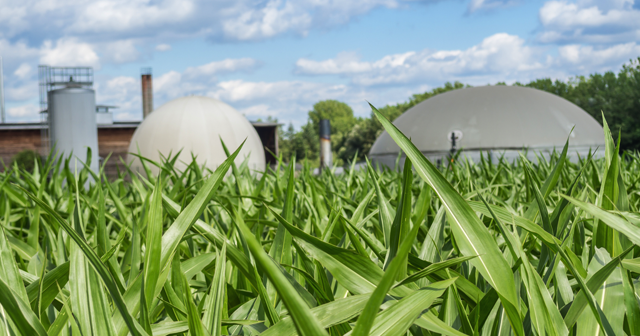What Happened After the National Ethanol Conference?

In mid-February several members of the DTN agriculture team attended the National Ethanol Conference in San Diego. The topics and side-conversations this year were lively and mainly centered about significant biofuel announcements anticipated to roll out on March 1 or soon after. After conversations with my colleagues and biofuel customers three topics were clearly top of mind for attendees – tax credits, carbon intensity and future market demand for biofuels. Since writing my recap of the event, several interesting updates have occurred. So, what happened after the National Ethanol Conference?
Evolving Tax Credit Legislation
A major topic of discussion at the conference centered around the tax credit proposals 45z (aka Clean Fuels Production Credit), and 40B (aka Sustainable Aviation Fuel credit) under President Biden’s Inflation Reduction Act. These tax credit incentives provide significant tax savings by obtaining lower emissions through their production lifecycle.
Greater than 50% of the carbon intensity score for an ethanol facility comes from its feedstock.
Ethanol plants have a variety of ways that can reduce their emissions, such as improving productivity and conversion efficiency, using renewable power sources, but greater than 50% of the CI score for an ethanol facility comes from its feedstock. Since a portion of the tax credit is based on the CI score of the grain – depending on the type and CI of the fuel – every point is valuable. Even though the official legislation for these credits is required by the end of 2024, rumors had attendees hopeful that White House officials would offer further clarity on the validation, verification, or data requirements in March. This would give ethanol producers more time to prepare and optimize the credits which begin January 1, 2025.
Update: The pending tax credit legislation, a linchpin for industry stability, still hangs in the balance, subject to the changes in circumstances of regulatory timelines and the political arena. A likely shift in presidential leadership or a delay in establishing firm rules could ripple through the market.
Official Carbon Intensity Model in Flux
At the conference, most attendees expected the Greenhouse gases, Regulated Emissions, and Energy use in Technologies (GREET) model developed by the Department of Energy’s Argonne National Laboratory to be declared the model of choice for 45Z and 40B. Earlier in the year, White House officials had set a March 1 deadline for announcing the carbon intensity model.
Currently, there is no official model for 45Z. Ethanol producers rely on scores from a farmer-generated CI tool or have an in-house assessment. Several conference attendees said they recognized the need for a sourcing tool to adjust the feedstock CI score and determine whether they need to extend beyond their current supply shed to engage farmers with lower scores. The model for the SAF tax credit is the ICAO model but many ethanol producers are pushing for the GREET model for both tax credits because it offers a more robust lifecycle assessment of ethanol and biofuel facilities.
Update: On March 1, the announcement was not on which model to use, but rather that the officials would miss the deadline to complete modifications to the GREET model for sustainable aviation fuels (SAF).
USDA Secretary Tom Vilsack assured the biofuel and ethanol industries that it would take “weeks not months” to get the guidance correct and stressed that it was “essential to get the details around any modifications to the GREET model right.”
Investment in Future Biofuel Technologies
The demand for biofuels hangs in a delicate balance of future energy mandates and national sustainability goals. According to NEC speaker, Geoff Cooper, President and CEO of the Renewable Fuels Association, existing bio-refineries have the capacity to produce nearly 18 billion gallons annually, 13% more than the current production of 15.6 billion gallons.
But there is concern that future energy mandates could significantly impact scaled-up production. For example, two-thirds of all new cars in California are expected to be electric by 2032 and California is expected to declare a 100% electric vehicle (EV) sales mandate by 2035. According to Cooper, every 1 million EV sales slash biofuel demand by 500 million gallons.
Conversely, sustainable aviation fuel is expected to rise. Last September, the Biden administration set a Sustainable Aviation Fuel Grand Challenge to increase the production of sustainable aviation fuels to at least 3 billion gallons per year by 2030; about 10% of the total aviation fuel market.
Update: The delayed carbon intensity model selection has trickle-down implications on sustainable aviation fuel production. Vilsack “is confident that 95% of SAF will come from feedstocks from farmers” which is why the model needs the “best science.” In a statement on the Renewable Fuels Association website, Cooper, said the association supports the emphasis for scientific integrity but cautioned that “Investment and innovation in SAF technologies will remain frozen until the model is finalized and additional guidance is issued.”
Several attendees recognized the need for a sourcing tool to adjust the feedstock CI score and determine whether they need to extend beyond their current supply shed to engage farmers with lower scores.
What’s Next?
The biofuel markets have always been volatile and it was evident at the conference that biofuel producers and associations were eager to gain more clarity for meeting the country’s lower emission directives and optimizing carbon credits. While the delayed decisions disappointed many attendees, the emphasis on not only ensuring the accuracy of models but also incorporating the most relevant information regarding a farmer’s practice into the model should ease concerns.
With the validation and incentives still undecided, I predict the industry will face several more “wait and see” events before ethanol producers can confidently advance with updated biofuel strategies.
DTN EcoField technology offers unparalleled field-level data crucial for navigating the evolving landscape of sustainability metrics for ethanol facilities and associations. Find out how.

About the author
Marco Hunstad is the General Manager for Agriculture for DTN. He leads strategy and direction for delivering relevant and actionable insights to customers across the agriculture value chain. He leverages his 20+ years of experience in grain monitoring and intensive livestock farming with his passion for developing predictive modeling and applicable technology to help foster digital transformation within the industry.











 Comprehensive weather insights help safeguard your operations and drive confident decisions to make everyday mining operations as safe and efficient as possible.
Comprehensive weather insights help safeguard your operations and drive confident decisions to make everyday mining operations as safe and efficient as possible.